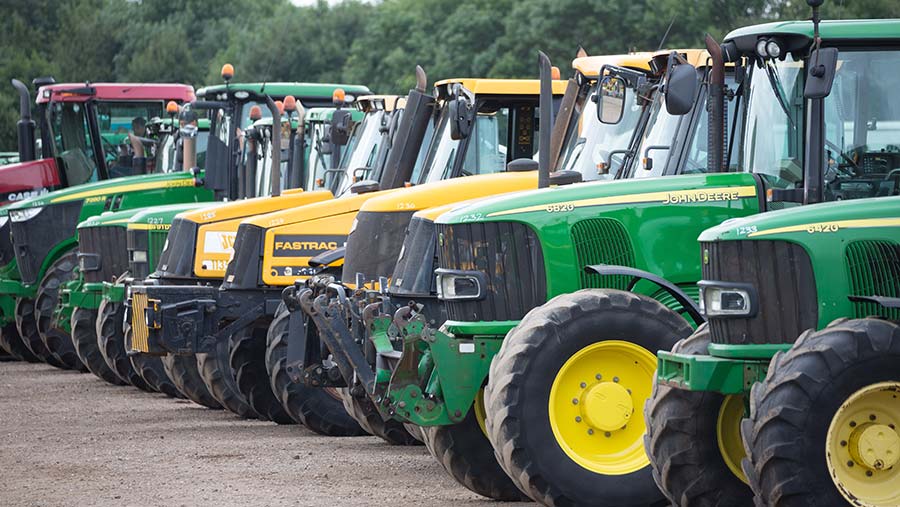Handy checklist for buying a second-hand tractor
 © Tim Scrivener
© Tim Scrivener Having a comprehensive checklist to hand when going to view a second-hand tractor could make the difference between bringing home a stalwart and shelling out for a disaster.
The second-hand market is awash with tractors, from low-hours ex-dealer models to well-used hire fleet machines and everything in between.
Of course, buying used kit is standard practice for many readers, but it’s worth arming yourself with a comprehensive checklist to make sure no stone is left unturned before you sign on the bottom line.
See also: Legal tips for buying and selling second-hand machinery
Documents
Get some background on the machine, including where it has been, who has owned it and what work it has been doing.
Check service logs, if there are any, and make sure all documentation is in place, including any potential warranty details. It’s worth making sure the engine number still correlates with the log book, too.
We’d suggest doing an online HPI check to make sure there is no outstanding finance. And if it has been serviced by a dealer, give them a call to chat about its history.
Exterior
Looking around the outside of the tractor, make sure the treads and makes of tyres match and that wear is even across the width.
If the tractor has been parked up for a while, tyres may have flat spots and perished sidewalls and will probably require replacement.
If it’s a tracked machine, try to spot any uneven wear and make sure the idler wheels still have life left in them.
The condition of the paintwork will most likely be age related, with tractors on livestock farms generally having a harder time of it.
Check that the colour matches on all panels and there have been no shoddy repair jobs – look closely for pitting or sanding marks behind the paint that provide clear signs of a sub-standard repair job.
At the rear, make sure all the hydraulic and air hoses are in good shape and that the air tanks (if fitted) haven’t been damaged.
Any tractor used for fertiliser spreading will suffer from corrosion, so give all the latches a pull to make sure they aren’t seized.
It’s also worth checking that the link arms move smoothly through the full lift distance, and inspect the general condition of the lift rams and towing eye.
Interior
Visual assessment of the seat and controls will give you a clear idea if the tractor has been looked after or neglected. Don’t be afraid to take your time and check that everything is functioning: lights, radio, air-con, screen, electric mirrors and so on.
Make sure there are no cracks in the glass or the cab frame and that all doors and windows seal as they should.
Running it
Start the machine from cold, as this is the best time to check for any unwanted or suspicious noises. Get it up to temperature and stand outside to hear it ticking over, keeping an ear out for any dips or peaks in the engine note at idle.
Check the condition of all the oils and look for any oil leaks after the engine has been running for a while. Look around the engine bay for evidence of any long-term leaks. Also check the emissions cleaning equipment and ask whether it has been replaced in the past.
Give it a proper drive and notch through all the gears, going up and down the ranges slowly and at speed to monitor the smoothness and synchronisation.
Listen for any grinding while turning the steering wheel from lock to lock and be sure that the diff-lock and four-wheel-drive engage and disengage as they should. If possible, hook a trailer on to test the hitch and hydraulics, listening for any whirring from the pump.
To buy or not to buy?
Take into account any immediate spending required for servicing or repairs, and try to factor this in when negotiating any kind of discount.
Consider what you’ll be using it for and what you’d need to add to bring it up to spec. If it doesn’t come with a set of weights or is missing parts such as a top link or set of link balls, could these be thrown in for the price?
Make sure there is a purchase contract or invoice drawn up that clearly states any warranty period and what it covers. And remember that it’s your decision – if you’re not happy, walk away.
Download a PDF version of our second-hand tractor buying checklist.

